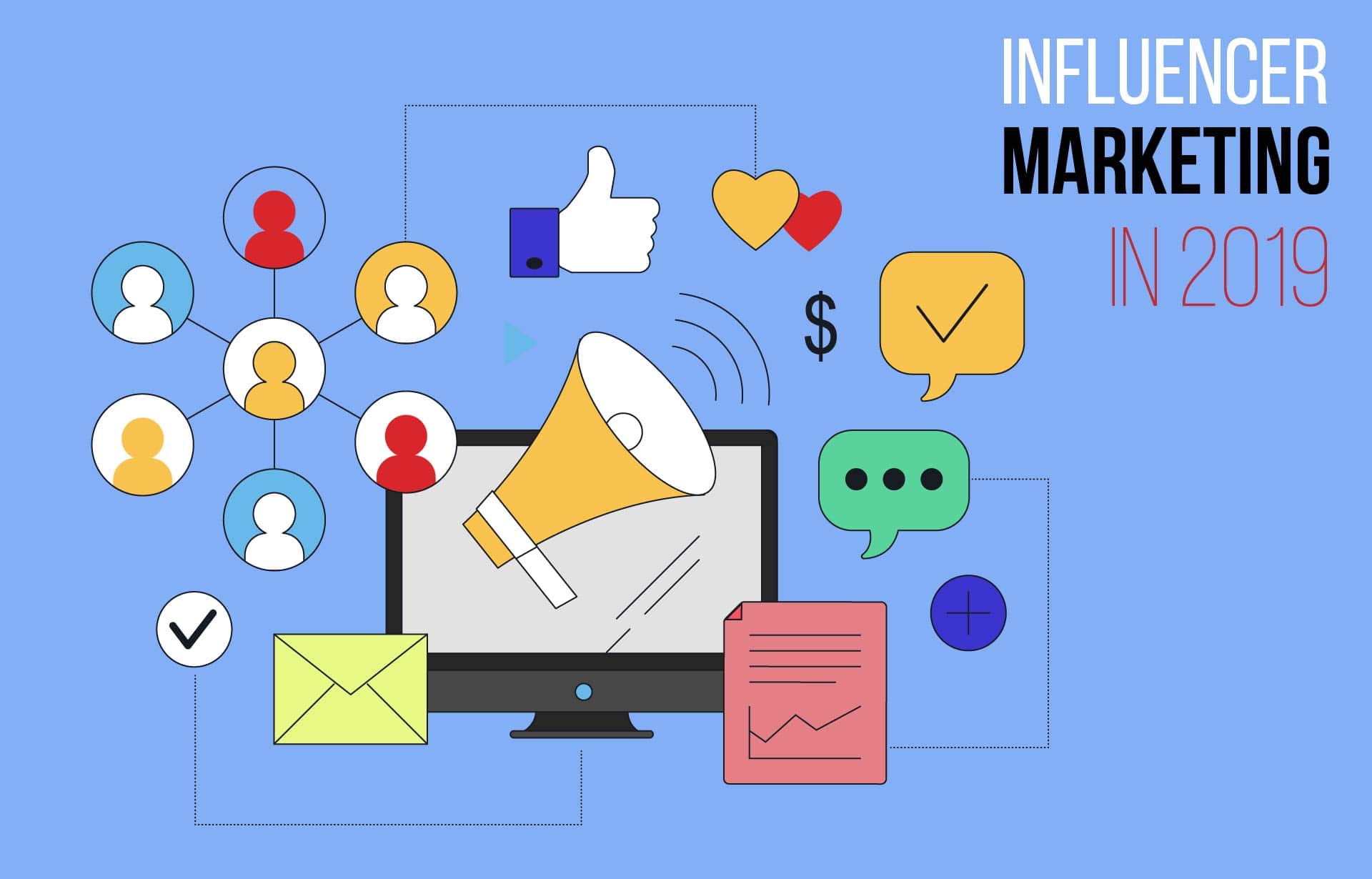How many times have you found yourself watching Stories posted by an Instagram influencer or a product review by a YouTube vlogger when contemplating whether to purchase an item or not? The hype surrounding influencer marketing is real, and a lot of facts and numbers back this view.
A fascinating piece of data revealed that 49% of users rely on influencer recommendations before actually buying a product. Additionally, according to NeoReach’s statistics, businesses, and companies that incorporated influencer marketing into their campaigns saw a 520% return on investment last year.
So who are these so-called influencers, and why do they have such ‘influence’ over consumers’ spending habits?
What is Influencer Marketing?
Musicians, actors, and athletes gained massive followings due to their fame and contribution to pop culture or sports. Influencers, on the other hand, are ‘regular’ individuals who amassed thousands (or even millions) of followers by sharing their expertise or knowledge on key topics or niche areas.
More than half of the influencers focus on beauty, fashion, or lifestyle, and grow their network on various digital platforms.

That said, Influencer marketing is a strategy where marketers or business owners collaborate with influencers to promote their products or services and tap into the influencers’ already established network. Their goals are mainly focused on increasing ROI and sales conversions.
The relatable appeal and authenticity of influencers have the power to gain the trust of hard-to-please consumers. Because of this, marketers are prompted to increase their budget and build a long-term partnership with influencers. When done right, this tactic often results in enhanced brand integrity, which could help businesses in the long run.
What Are the Main Platforms for Influencers to Grow and Interact with Their Followers?
1. Instagram
With over a billion monthly active users, the second most popular social network in the world is the number one choice of influencers — 96% of the total number of influencers to be exact.
Aside from a large number of users, which often translates to excellent reach, influencers prefer Instagram because it’s easy to engage with the audience within the platform. By simply posting Stories or quality images or videos with relevant hashtags, they can share meaningful posts with their audience and drive interaction.
2. YouTube
According to statistics, 40% of millennial consumers feel that a YouTube influencer understands them better than family or friends. Furthermore, 18% of YouTube subscribers rely on product reviews on the platform prior to purchasing an item. Those are only a few of the many interesting statistics that prove it’s one of the best digital platforms for influencing and marketing.
Vloggers, gamers, and celebrities populate the video content sharing platform. Influencers leverage the platform’s features to share their tips and how-to videos, product testimonials, and other sponsored content.
3. Facebook
Though not as popular as Instagram and YouTube in terms of the number of influencers, the social media giant is still a go-to platform for both marketers and influencers. They use it primarily to increase online visibility and expand their network.
Moreover, Facebook introduced the Brand Collabs Manager in July 2018. This tool aims to help businesses and creators (influencers) to build a solid partnership and allows both to work hand in hand in creating high-quality, sponsored content.
In addition, this tool makes it easy for marketers to spot the ideal influencer who can represent the brand by giving access to the influencer’s portfolio.
4. Twitter
Not much has been published about Twitter’s popularity among influencers. However, the platform has a massive user base (321 million monthly users) and engagement activities (approximately 500 million tweets a day). This is why influencers still flock to the network to share their take (in the form of 280-character tweets) on topics they specialize in.
The Perks of Influencer Marketing and How Brands Can Take Advantage
Several of the previous year’s data reports indicated that businesses that implemented influencer marketing campaigns experienced an increase in leads and revenue and improvement in brand awareness.
MediaKix 2019 influencer marketing survey also revealed that 80% of marketers still find influencer marketing effective, while 65% intend to increase their allocated budget for it.
So how effective is influencer marketing to drive this much hype and increase in the digital marketing budgets? Let’s dive in and find out.
Establishing Brand Reputation
Although getting a celebrity to endorse the brand still holds power in terms of brand exposure, marketers have thought of a way to yield better conversions at a fraction of the cost — by collaborating with an influencer.
The increasing demand for authenticity and transparency paved the way for marketers to rely on influencers to attract modern consumers, particularly the younger demographic. Many statistics have shown that consumers place more trust in influencers who are experts in their niches than their celebrity counterparts.
Brands that have successfully built an authentic, meaningful relationship with the right influencer have better chances of gaining the trust of discerning consumers and drive them to spend more on their products or services.
Expanding Audience Reach
Authentic influencers are considered to be experts in their respective fields. A product review of a beauty guru with an elegantly curated feed on Instagram or an opinion of a thought leader on Twitter who runs a B2B business can lead to a massive reach and engagement because their loyal followers hang on to their every word. When they promote your product, it’s like word-of-mouth in the digital age.
Marketers looking to yield better engagement and reach are opting to run campaigns with micro-influencers. They have relatively smaller followers compared to macro-influencers, but their posts deliver a greater impact on their audience.
Driving More Consumers to Buy
Influencers could indirectly impact consumers’ purchasing activities. For instance, consumers rely on reviews to check if the product is worth purchasing or not. The right influencer won’t run out of methods to creatively deliver engaging content and reliable product testimonials. Plus, their followers (your potential consumers) trust them, and they place value on their opinions.
The right use of call-to-action also generates sales. Instagram, for example, added the ‘Swipe Up’ feature in the Stories, in which influencers can redirect the audience to the sales page.
Call-to-action can also come in the form of special offers, a contest, or product giveaways. These not only drive a high level of engagement but also encourage them to try the product and help brands secure a second purchase.
The How-Tos of Implementing a Result-Driven Campaign
By now, you have probably already realized that influencer marketing offers effective ways to meet the demands of modern consumers and decided to run your own campaign. So what are the steps to follow and ensure that your campaign generates the desired results? Read on to learn more.
1. Understand your target audience
Prior to developing a campaign, you should have a deeper understanding of your target group and how they behave on various digital platforms. Identify where they usually spend most of their time and what tickles them by monitoring their interactions on the specific platform.
By tapping into their minds, you’ll be able to present the product that caters specifically to their needs, as well as choose the ideal influencer to represent your brand.
Take advantage of the tools and platforms at your disposal and research about the popular, trending topics related to your brand. Leveraging tools such as BuzzSumo, Reddit, Google Trends, and Quora is a great way to start.
2. Launch your campaign with the right influencer
Based on studies, factors that marketers take into account when choosing an influencer include industry relevance, content quality, and personality. Do not make the mistake of overlooking or dismissing the high level of engagement of your prospect just because of a low follower count.
In addition, there is a growing trend of marketers collaborating with micro-influencers who have between 2,000 to 50,000 followers. They have smaller followings compared to macro-influencers but deliver greater engagement rates.
In many cases, a huge following doesn’t equate to excellent engagement and reach. In fact, more and more brands and marketers are getting alarmed at the increasing number of inauthentic influencers with fake followers populating the different social media platforms.
So before reaching out for a potential collaboration, scan the authenticity of the influencer first. Spotting a fraudulent account can be tricky. However, allotting extra time and effort for this task can prevent a fake influencer from eating into your marketing budget and affecting brand integrity.
3. Keep yourself up-to-date with the latest FTC regulations
It’s crucial for marketers to be always on the lookout for the recent changes and updates in the FTC guidelines. This is essential to adhere to the FTC’s objective, which is to protect consumers from poor, deceptive business practices.
4. Give the influencer sufficient creative freedom
One of the most common mistakes marketers make when partnering with an influencer is not setting clear expectations. You should be able to communicate what your brand needs to influencers without asking them to lose their creative voice or style.
Keep in mind that the reasons audiences are drawn to influencers are because of their genuine relatability, as evidenced by the 94% of social media users who emphasized the importance of authenticity and transparency.
At the same time, 64% of influencers care a lot about their reputation as an industry leader or expert and state that they wouldn’t choose money over followers.
Modern consumers are also smarter nowadays. They know if something looks staged or impersonal, and forcing the influencer to do it your own way can do more harm than good. So building a collaborative partnership with the influencer is the only way to go, which brings us to the next topic.
5. Establish a meaningful, collaborative relationship with the influencer
As a marketer, you should understand that building a robust partnership with influencers has the potential to impact your brand’s online visibility and overall reputation. Real influencers know what they’re doing, and they have a distinct tone and style. By adding your own creative input, the collaborative efforts will yield better marketing results.
Start by introducing the products and offering freebies and fair compensation. You can also invite them to sponsored events. The ideal scenario would be if the influencer genuinely likes the brand. This way, it will be easier for them to convey your brand’s message to their already established network of followers and will be more open to content co-creation.
Final Notes
Influencer marketing is growing as an industry, and it could be worth $16.6 billion by 2020, according to a recent Forbes report.
What makes influencer marketing a compelling strategy is that it encourages genuine interaction and collaboration among marketers, influencers, and their audience. The brands’ and influencers’ shared commitment to producing quality content and driving engagement and conversions have made a dramatic shift in the way consumers perceive many brands and patronize their products.
Based on the current figures and results, influencer marketing is not dying down anytime soon.








